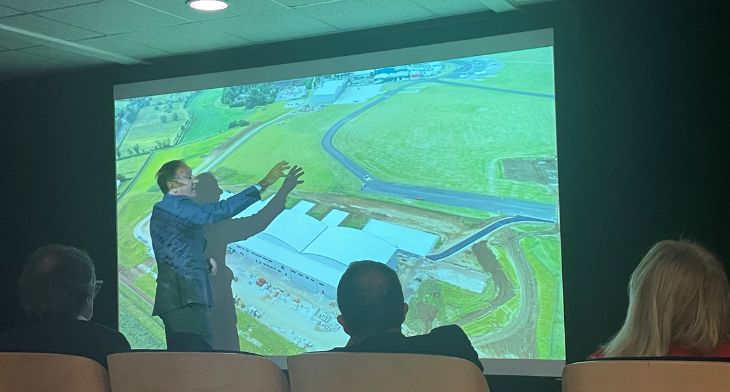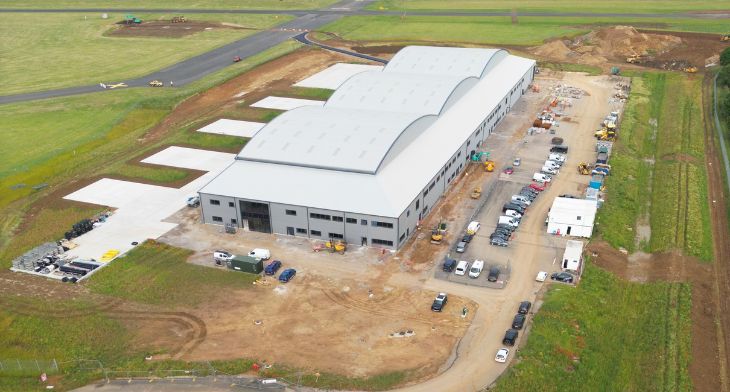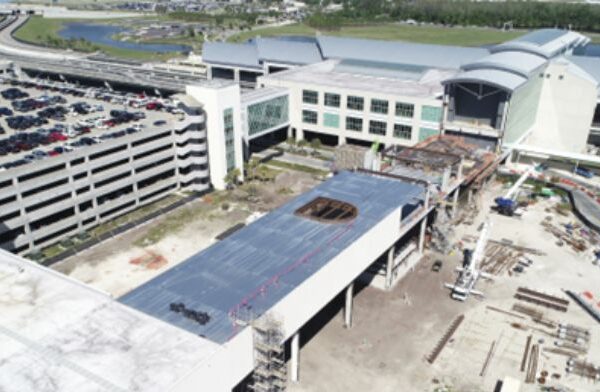


While there are still various challenges to overcome in meeting the demand of next generation aircraft, these are outweighed by the exciting opportunities these aircraft pose, particularly for smaller airports and aerodromes.
According to James Dillon-Godfray, Business Development Manager at London Oxford Airport, “if you have a small aerodrome close to a major city, that’s a valuable asset now.” He was talking at a Disruptors’ Day held at the business aviation hub on 19 September, where he also pointed out that within the next four years, we will see a whole raft of next generation aircraft becoming available. The caveat, he said, is “any aerodromes wanting to adopt the use of these next-generation aircraft will need to be licensed, if not already.” He also referenced speculation that any facility wanting to operate a vertiport will need an airspace change proposal (ACP) to introduce a Transponder Mandatory Zone (TMZ) to protect the airspace and have visibility of everything that’s going on in the immediate vicinity.
Dillon-Godfray also said that the establishment of vertiports in city centres is cause for concern, with some regulatory authorities saying its better to use already established aerodromes for eVTOL activity. “These airfields need protecting so they can host urban air mobility (UAM) flights.”
Leading the charge
Charging facilities remain one of the key challenges for hybrid-electric aircraft and eVTOLs in particular. There is currently no commonality for EV charging points and eVTOLs will require a fast charge with significant volumes of power, with Dillon-Godfray suggesting that in some instances, 1MW power supply will be needed per vehicle. “That’s a huge challenge. If you want 1MW or more, you’re seeing a lead time of up to two years to get that supply,” Dillon-Godfray said.
Reaffirming his point, he underlined that plans to fly a Pipistrel Velis Electro from Norwich to Oxford for the day had to be abandoned due to a lack of charging facilities enroute.
On the subject of hydrogen as an alternative fuel, Dillon-Godfray warned the need to choose wisely, as “there’s a lot of different types of hydrogen out there.”
Green tech hub
With ambitions to become a ‘green tech’ hub, London Oxford has received planning permission to develop a £48 million research & development (R&D) Science Park, which will target start-ups and spin-outs from the University science ecosystem. The green campus environment will cover 200,000 sq.ft. with 25% of parking dedicated to EV charging. It will also feature 195 cycle racks and a solar array. The build is on track to start in January 2024, with the first phase of the development expected to be ready for its new occupants by early 2025.
Elsewhere at the airport, a new fuel farm housing five tanks capable of holding 425,000 litres of fuel is under construction while Oxford-based clean fuel startup, OXCUU, is developing a compound for synthetic fuel development on site at the airport. A new fuel tender will also see sustainable aviation fuel (SAF) available at the airport as early as next year. The airport has also invested £6 in a new taxiway, to ensure smoother, faster operations, less ground dwell times, less emissions, less fuel burn, less noise and a better passenger experience. It has also opened a new £1.7 million fire station and work is currently ongoing for Airbus Helicopters’ 125,000 sq.ft. MRO facility. The environmentally efficient site will feature seven dedicated helipads, 66,000 sq. ft. hangarage and 59,000 sq. ft. of office space and workshops. It is expected to be occupied in summer 2024, coinciding with the 50th anniversary of Airbus Helicopters operations in the UK.
Looking ahead, a proposal has been submitted for a massive 1,300+ hectare 840MW solar PV park next to the airport, while the local county council is also looking to develop an integrated airport transport hub site offering park and ride amenities to access the city centre, but also to integrate with future UAM opportunities.
Disrupting the market
Marking the first time London Oxford Airport has hosted its ‘Disruptors’ Day’, the event saw speakers from a selection of forward-focused companies that are disrupting the market with technology and transformative service offerings showcase their developments. SaxonAir’s Alex Durand showcased the different initiatives being adopted at Norwich Airport to educate the wider public and embrace sustainable growth. Darrell Swanson, EA Maven Co-founder discussed his Regional Air Mobility index, while Tomislav Lang, Flyvbird’s CEO spoke about his plans to operate the first low-cost, regional on-demand airline giving passengers the choice to travel from A to B at their convenience rather than having to fit in with an airline’s schedule. Naomi Wise revealed how OXCUU has raised £18 million to convert carbon dioxide captured from the air and hydrogen into SAF. Stephen McKenna explained how Textron Eaviation is supercharging its electric aviation ambitions following the acquisition of Pipistrel, while the UK launch customer for the Lillum Jet, Volare Aviation, showcased a prototype of the eVTOL, which is listed at just over £9 million, and revealed first customer deliveries are expected in 2026. Meanwhile, insurance broker Gallagher wrapped up the day concluding that electric aircraft and eVTOLs in particular are a great opportunity for the industry, but knowledge and transparency is needed as this is not a tried and tested sector.






